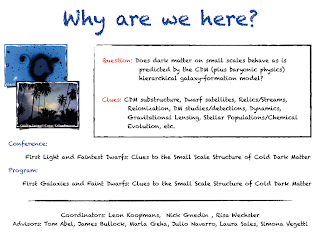The structure of star clusters in the outer halo of M31

I am slowly recovering from the recent round of grant writing. The internal deadline for our Australian Research Council (ARC) Discovery Projects (DPs) was on Monday, and, as ever, it was late nights and early mornings to put together the 115 pages of science case, budgets, budget justifications, publication records, career histories etc etc etc. Now all I have to do is sit back until July (when the referees' reports come in) and then to November (when the results are announced). If I get my grant, I'll write and say how great the systems is. However, if I am the three in four who will not get funded, I'll have a rant. Anyway, even though the days have been lost to grant writing, science has advanced, and we recently had a paper accepted for publication in MNRAS, using the Hubble Space Telescope to look at clusters around our nearest big galactic neighbour, Andromeda. Many objects are globular clusters, just like the ones we orbiting our own Milky Way. With Hubble Spac

